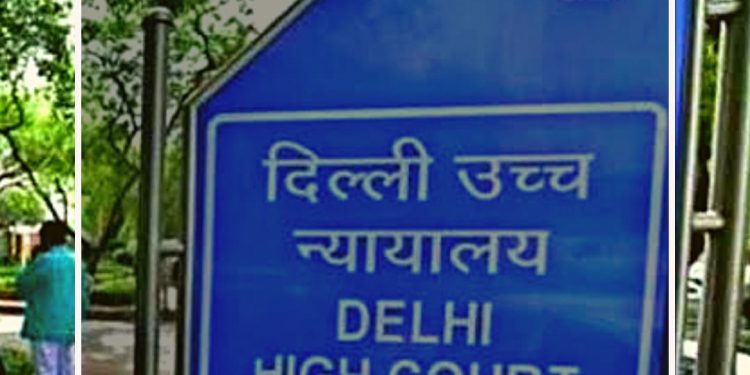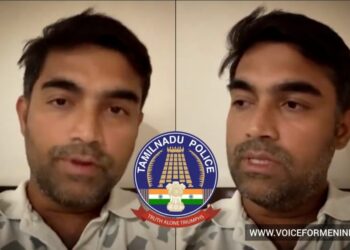The Delhi High Court recently upheld the order of an Additional Session Judge directing a married man to pay ad-interim maintenance under the Protection of Women from Domestic Violence Act, 2005 to a woman claiming to be his live-in partner.
While doing so, the Single Bench of Justice Subramonium Prasad observed that the issue as to whether the parties were residing in a shared household and were enjoying a domestic relationship in the nature of marriage, could not be decided without leading evidence.
Case:
The woman (respondent) – who filed for maintenance – claimed that the petitioner did not disclose his marital status when they met, so as to induce her to marry him. She also stated that the petitioner had executed a Marriage Agreement with her, to show his genuineness and responsibility towards her and her child from the previous marriage. Thereafter, the petitioner is said to have told the respondent that his wife is on dialyses and would not survive long and therefore he is looking for a life partner and that he is going to marry her.
The woman claimed that the petitioner also arranged a rental accommodation and both of them were living as husband and wife. She mentioned that the petitioner’s name is shown as the father of her child in the school records. Further, the petitioner is named as a nominee in her bank accounts, reported Livelaw.
The woman now prayed that on account of differences with the petitioner, directions may be issued restraining the latter evicting her from the rented accommodation and also directing him to pay interim maintenance.
Arguments By Petitioner
The petitioner on the other hand challenged the maintainability of proceedings under the DV Act. He stated that the Respondent admittedly knew that he was married to somebody else and therefore, she cannot claim any relief under the DV Act as the question of relationship in the nature of marriage under Section 2(f) of the Act does not arise.
Delhi High Court
At the outset, the Court observed that in order to maintain a petitioner under the DV Act, the aggrieved person has to show that the aggrieved person and the respondent (man) lived together in a shared household and this could be even from a relationship in the nature of marriage.
In the instant case, the Court said, the material placed on record shows that the petitioner had entered into a marriage agreement in the year 2012 wherein it is stated that both the parties intend to marry each other. The court observed:
The agreement shows that the petitioner undertook to discharge all liabilities/obligations towards the respondent herein and similarly the respondent undertook to discharge all liabilities/obligations towards the petitioner herein. The affidavit has been signed by both the parties.
After the respondent herein obtained divorce from her husband, another agreement-cum-marriage deed was entered into between the parties on 22.11.2014, wherein it is stated that the petitioner and the respondent are residing together for the last five years in a live-in relationship and are now getting married to each other according to Hindu rites and ceremonies and the marriage was solemnized in an Arya Samaj Mandir at Delhi. The marriage deed also records that after solemnization of marriage both the parties will reside together as husband and wife and will be faithful towards each other. The marriage deed has been signed by both the parties.
There are photographs of the petitioner and the respondent which gives an impression that the parties were living together as husband and wife and have married each other. The school records of the child have been filed wherein the petitioner has been shown as the father of the child. Copies of the bank accounts have been filed wherein the petitioner has been shown as a nominee of the account held by the respondent.
It concluded that the parties are majors and they have voluntarily cohabited for a significant period of time.
Whether Maintenance Permitted For Woman Living With Married Man?
The court ruled that the question as to whether the respondent herein has been duped by the petitioner or whether she was a party to an adulterous and bigamous relationship or not and whether her conduct would not entitle her for any protection under the DV Act can be determined only after the evidence is led. It noted:
The high court discussed the case of Indra Sharma v. VKV Sharma, where the Supreme Court had held that the duration of the period of the relationship, the question as to whether there was a shared household or not, the pooling of the resources and financial arrangements, the domestic arrangements, the socialisation in public, the intention and the conduct of the parties, are all questions of fact which have to be established by leading evidence.
Thus concluding the matter, the High Court added that in case the Trial Court, after evidence is led, comes to a conclusion that the respondent herein was not entitled to the protection of the DV Act then adequate safeguards must be made to ensure that the respondent returns the amount received by her as interim maintenance back to the petitioner with interest.
ALSO READ –
READ ORDER | Delhi High Court Upholds Husband’s 1/3 Salary As Maintenance To Advocate Wife
READ ORDER | Obligation Of Father To Maintain Son Even After He Attains Majority; Rejects Maintenance To Working Wife
Delhi High Court Rejects Omar Abdullah’s Plea For Early Hearing In Divorce Case Since Wife Is Not Consenting
Daughter-In-Law Cannot Stay At In-Laws’ House If She Mistreats Them: Delhi High Court
Join us on our Telegram, Facebook Group & Koo App
Join our Facebook Group or follow us on social media by clicking on the icons below
If you find value in our work, you may choose to donate to Voice For Men Foundation via Milaap OR via UPI: voiceformenindia@hdfcbank (80G tax exemption applicable)































Wonderful, this will empower a women to marry 2 men at a time and still go to court of so called LAW and falsely accuse both of DV and then get maintainens from both. Indian Law is going in right direction.